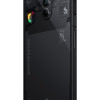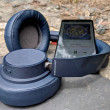Review: LG Dare
The Dare uses touch resistance technology, so you have to push the screen in order to get it to respond. We've used two different devices. One was a prototype, the second a final product. As seems to be a regular problem with touch resistance, you often have to press more than once to get it to react. This is a consistent finding across various manufacturers that use this technology, though we have noticed that LG does a better job of it than some of the competition.
With the Dare, we found that two presses was generally all it took to get something to happen. Similar to other phones that use this technology, we also ran into false positives. We'd touch an icon on the screen, the icon would light up, and the phone would vibrate (providing two forms of feedback), but the phone would not do anything else and fail to open the application.
If you want to scroll through menus, you have to touch the screen first, then scroll up or down. You can't casually flick the screen in one direction. Attempts at doing this often ended up opening an application or other item that you might not have intended.
The Dare has haptics, but they aren't localized. This means when you press the screen, the entire phone vibrates to let you know you've touched it. The style of vibration - as well as the strength of the vibration - can be set by the user, and includes the option for no vibration or haptics at all. You can't control the sensitivity of the touch settings, though.


 LG Announces Three New Phones for Verizon
LG Announces Three New Phones for Verizon
 Samsung Puts its Best Camera Yet in the Galaxy S23 Ultra
Samsung Puts its Best Camera Yet in the Galaxy S23 Ultra
 TCL's Newest 5G Phone for US is Most Affordable Yet
TCL's Newest 5G Phone for US is Most Affordable Yet
 Google's Pixel Fold Goes After Samsung's Z Fold
Google's Pixel Fold Goes After Samsung's Z Fold
 RedMagic's New Gaming Phone Comes with up to 24 GB RAM and 1 TB Storage
RedMagic's New Gaming Phone Comes with up to 24 GB RAM and 1 TB Storage
 LG Dare VX-9700
LG Dare VX-9700



